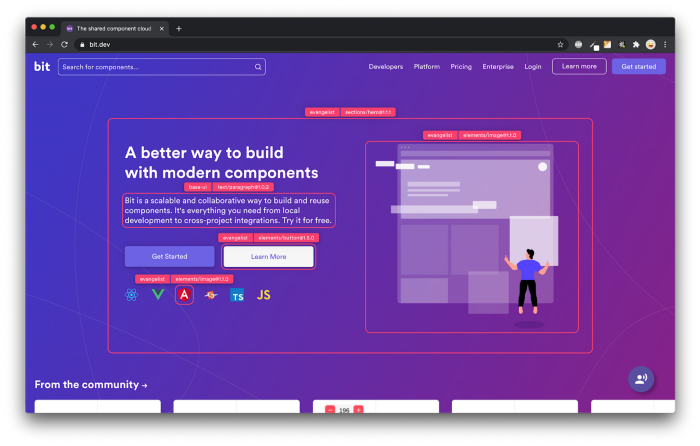This content originally appeared on Bits and Pieces - Medium and was authored by Alexander Sivtsov
Different Ways to Store Data in the Browser
Different ways to store data in the browser, along with their pros and cons: Cookies, Local Storage, Session Storage, IndexedDB, WebSQL.

Modern web applications are expected to be dynamic and interactive, providing users with a seamless and responsive experience. Storing data in the browser is a fundamental aspect of building such applications.
With the advent of modern web technologies, web developers now have access to various ways of storing data in the browser.
Each storage option has its advantages and disadvantages, and choosing the right one can make a significant difference in the performance and user experience of the web application.
In this article, we will explore the different ways to store data in the browser, along with their pros and cons, to help developers make informed decisions when choosing the most suitable data storage option for their web applications.
There are several ways to store user data in the browser:
1. Cookies: Cookies are small text files that can store data such as user preferences, login information, and shopping cart items. They are typically used to store session data that is only available while the user’s browser is open.
2. Local Storage: Local storage is a key-value store that can hold larger amounts of data than cookies. It is supported by modern web browsers and can be accessed via JavaScript. Local storage is persistent, meaning that the data will remain available even if the user closes their browser.
3. Session Storage: Session storage is similar to local storage, but it is not persistent. Session storage is only available for the duration of the user’s session, meaning that the data will be lost when the user closes their browser.
4. IndexedDB: IndexedDB is a powerful client-side database that can store large amounts of structured data. It is supported by most modern web browsers and provides a powerful set of APIs for managing and querying data.
5. Web SQL: Web SQL is a deprecated technology that was designed to provide a SQL-like database on the client side. It is still supported by some web browsers, but developers are encouraged to use IndexedDB instead.
For that reason, we will not dedicate any time to discussing Web SQL in the sections below.
1. Cookies
Cookies are a popular way of storing data in the browser, but like any storage option, they have their pros and cons. Here are some of the advantages and disadvantages of using cookies to store data:
Pros
1. Easy to use: Cookies are easy to implement and use. They can be accessed using simple JavaScript APIs and do not require any special setup.
2. Small size: Cookies are small in size, typically limited to 4KB, and do not take up much space on the user’s device.
3. Persistence: Cookies can be set to expire after a certain amount of time, or they can be set to persist until the user deletes them. This makes them ideal for storing session data such as user preferences, login information, and shopping cart items.
4. Cross-site support: Cookies can be read by any website that shares the same domain, making them useful for tracking user behavior across multiple sites.
Cons
1. Security risks: Cookies are vulnerable to attacks such as cross-site scripting and cross-site request forgery, which can compromise user data and privacy.
2. Limited storage: Cookies have a limited size of 4KB, which can be a problem for applications that require large amounts of data to be stored.
3. No structured data support: Cookies only support key-value pairs and do not support structured data. This can make it difficult to store complex data such as JSON objects.
4. Not suitable for sensitive data: Cookies are not suitable for storing sensitive data such as credit card information or personal details.
Here is an example of a custom React hook that can be used for setting and getting cookies:
In conclusion, cookies are a simple and easy-to-use way of storing data in the browser, but they have some limitations and security risks that should be considered when using them. Developers should evaluate their data storage requirements and security needs to determine whether cookies are the best option for their application.
2. Session Storage
Session Storage is another way of storing data in the browser, but it works differently than cookies. Here are some pros and cons of using Session Storage for storing data:
Pros
1. Data stored in Session Storage is available only for the current browsing session, and it gets cleared automatically when the user closes the browser window or tab. This can be useful for storing temporary data that is only needed for a short time.
2. Session Storage can store larger amounts of data than cookies (up to several megabytes depending on the browser), so it can be a good option for more complex data structures.
Cons
1. Data stored in Session Storage is not persistent, so it cannot be accessed across different browsing sessions or devices. If the user closes the browser window or tab, or if the session times out due to inactivity, all Session Storage data will be lost.
2. Session Storage is only available within the same browser tab or window, so it cannot be shared across different tabs or windows. This can be a limitation if you need to access the same data from different parts of your application.
Here is an example of a custom React hook that can be used for setting and getting values from Session Storage:
Overall, Session Storage can be a useful tool for storing temporary data that is only needed for the current browsing session. However, it is not a good option for persistent data or data that needs to be shared across different sessions or devices.
3. IndexedDB
IndexedDB is another way to store data in the browser, which provides a more robust and structured way to store data than cookies or session storage. Here are some pros and cons of using IndexedDB for storing data:
Pros
1. IndexedDB can store large amounts of structured data in the browser, making it a great option for web applications that need to work offline or with large amounts of data.
2. IndexedDB provides more powerful querying capabilities than cookies or session storage, allowing developers to perform complex searches and filters on stored data.
3. IndexedDB provides transactions and object stores that make it easy to manage and manipulate data in a structured way.
Cons
1. IndexedDB has a steeper learning curve than cookies or session storage, and can be more complex to set up and use effectively.
2. IndexedDB is not supported by all browsers, so it may not be a viable option for some users.
3. IndexedDB can be more vulnerable to security risks than cookies or session storage, since it stores data locally on the user’s device.
Here is an example of a custom React hook that can be used for setting and getting values from IndexedDB:
To use the hook in a React component, import it and call it like this:
Overall, IndexedDB can be a powerful tool for storing large amounts of structured data in the browser. However, it may not be the best option for all applications, and requires careful consideration of security and compatibility issues.
4. Local storage
Local storage is a useful feature for web developers, but like any tool, it has its advantages and disadvantages. Here are some of the pros and cons of local storage usage:
Pros
1. User-Friendly: Local storage allows users to stay logged in and maintain their preferences and settings, making for a better user experience.
2. Speed: Local storage is faster than server-side storage, which can lead to faster load times for web applications.
3. Scalability: Local storage can store more data than cookies, which makes it more scalable for larger applications.
4. Availability: Local storage is supported by most modern web browsers, which means it is available to a wide audience of users.
5. Security: Local storage is more secure than cookies because it cannot be accessed by third-party domains, which can help prevent cross-site scripting (XSS) attacks.
Cons
1. Limited Storage: Local storage has a limited amount of storage space (usually around 5–10 MB), which can limit the amount of data that can be stored.
2. No Server-Side Access: Local storage can only be accessed by client-side code, which means it cannot be accessed or manipulated by server-side code.
3. No Encryption: Local storage data is stored in plain text, which means it is not encrypted and can be accessed by anyone who has access to the user’s device.
4. Browser Compatibility: Local storage is not supported by some older web browsers, which can limit its usefulness for certain applications.
5. Data Persistence: Local storage data persists even after the user closes the web browser or turns off their device, which can be a privacy concern if sensitive data is stored.
Here is an example of a custom React hook that can be used for setting and getting values from local storage:
Conclusion
In conclusion, there are several ways to store data in the browser, each with their own advantages and disadvantages.
Cookies are easy to use and widely supported, but have limited storage and can be vulnerable to attacks.
Session storage is secure and can store larger amounts of data, but is limited to a single session.
IndexedDB is powerful and can store large amounts of structured data, but has a steeper learning curve. Local storage is simple and easy to use, but has a limited storage capacity.
When choosing a method for storing data in the browser, it is important to consider the specific requirements of your application and the level of security and data persistence that is needed.
With the help of the React hooks provided in this article, you can easily integrate these different methods into your React applications and create a seamless user experience.
Build Apps with reusable components, just like Lego

Bit’s open-source tool help 250,000+ devs to build apps with components.
Turn any UI, feature, or page into a reusable component — and share it across your applications. It’s easier to collaborate and build faster.
Split apps into components to make app development easier, and enjoy the best experience for the workflows you want:
→ Micro-Frontends
→ Design System
→ Code-Sharing and reuse
→ Monorepo
Learn more:
- How We Build Micro Frontends
- How we Build a Component Design System
- How to reuse React components across your projects
- 5 Ways to Build a React Monorepo
- How to Create a Composable React App with Bit
Different Ways to Store Data in browser was originally published in Bits and Pieces on Medium, where people are continuing the conversation by highlighting and responding to this story.
This content originally appeared on Bits and Pieces - Medium and was authored by Alexander Sivtsov
Alexander Sivtsov | Sciencx (2023-04-22T06:32:38+00:00) Different Ways to Store Data in browser. Retrieved from https://www.scien.cx/2023/04/22/different-ways-to-store-data-in-browser/
Please log in to upload a file.
There are no updates yet.
Click the Upload button above to add an update.
